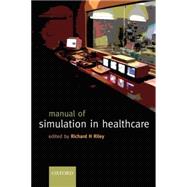
| Foreword | p. v |
| Preface | p. vii |
| Contributors | p. xiii |
| Simulation centre logistics | |
| Simulation and skill centre design | p. 3 |
| Simulation centre operations and administration | p. 11 |
| Mobile simulation | p. 25 |
| Simulators, training aids, and equipment | |
| Lessons from aviation simulation | p. 37 |
| Medium and high integration mannequin patient simulators | p. 51 |
| Airway training devices | p. 65 |
| Equipment | p. 81 |
| Cardiopulmonary resuscitation and training devices | p. 87 |
| Education components | |
| Teaching and learning through the simulated environment | p. 99 |
| Developing your teaching role in a simulation centre | p. 115 |
| Teaching in clinical settings | p. 125 |
| Scenario design: theory to delivery | p. 139 |
| Debriefing: theory and techniques | p. 155 |
| Teaching a clinical skill | p. 171 |
| Training and assessment with standardized patients | p. 181 |
| Team building and simulation | p. 199 |
| Problem-based learning for simulation in healthcare | p. 213 |
| Research in simulation | p. 227 |
| Applied simulation | |
| Simulation in nursing education and practice | p. 241 |
| Crisis resource management in healthcare | p. 277 |
| Intern training: a national simulation-based training programme to enhance readiness for medical practice | p. 295 |
| Non-technical skills: identifying, training, and assessing safe behaviours | p. 303 |
| Simulation training programmes for rapid response or medical emergency teams | p. 321 |
| Simulation in paediatrics | p. 337 |
| Obstetric simulation | p. 351 |
| Simulation in emergency medicine | p. 375 |
| Cardiopulmonary bypass simulation | p. 391 |
| Simulation for military medical training | p. 407 |
| Incorporating simulation into the medical school curriculum | p. 421 |
| Surgical simulation | p. 435 |
| Creating virtual reality medical simulations: a knowledge-based design and assessment approach | p. 449 |
| Respiratory medicine and respiratory therapy | p. 465 |
| Role of cognitive simulations in healthcare | p. 477 |
| Effective management of anaesthetic crises: design, development, and evaluation of a simulation-based course | p. 489 |
| Simulation in high-stakes performance assessment | p. 501 |
| Simulation in sedation training for non-anaesthesiologists | p. 519 |
| Medical educational simulation: a European perspective | p. 525 |
| Society for simulation in healthcare | p. 529 |
| Glossary of UK and US medical terms and abbreviations | p. 533 |
| Index | p. 541 |
| Table of Contents provided by Ingram. All Rights Reserved. |
The New copy of this book will include any supplemental materials advertised. Please check the title of the book to determine if it should include any access cards, study guides, lab manuals, CDs, etc.
The Used, Rental and eBook copies of this book are not guaranteed to include any supplemental materials. Typically, only the book itself is included. This is true even if the title states it includes any access cards, study guides, lab manuals, CDs, etc.